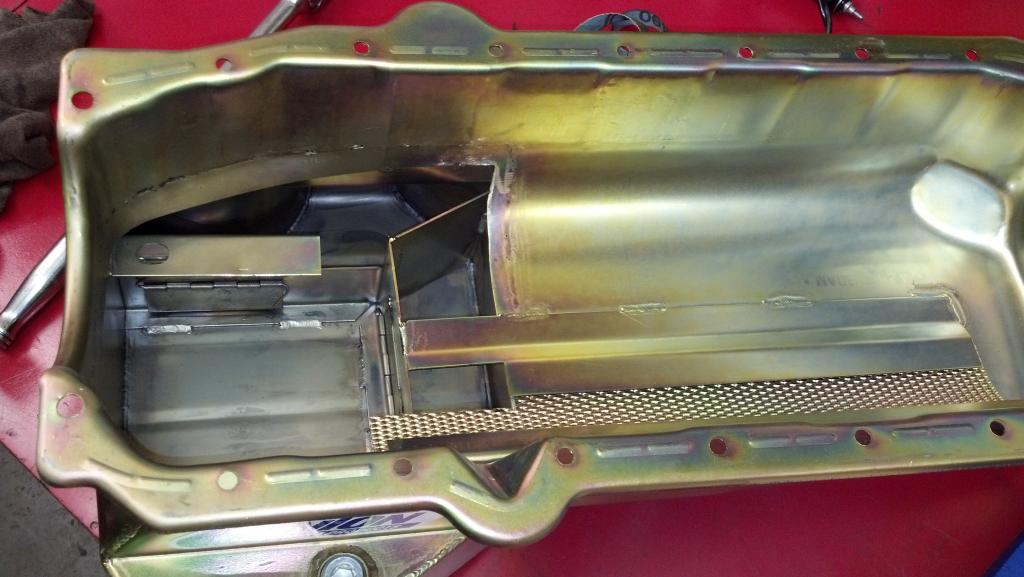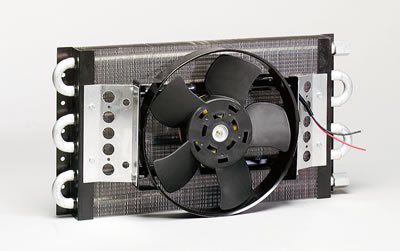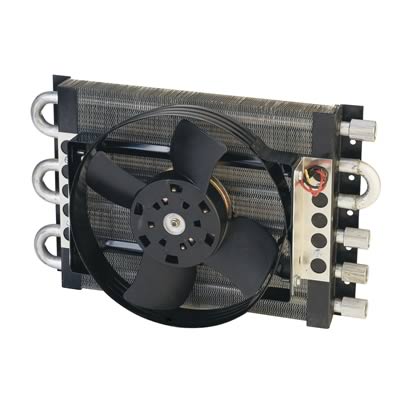Id bet serious money that if I asked a hundred guys why an engine gets hot durring its opperation I get almost 95% plus of the answers that stated it was due to the burning of the compressed fuel/air combustion in the cylinders , and the exhaust gases exiting the cylinder after on the exhaust stroke,and maybe 10% might mention friction, but it would be very rare to get the valve train, rings, pistons and bearings mentioned, as a significant source of heat.
while Im sure that most of those reading this will be rather amazed to find that only about 60%-65% of the heat orriginates in the combustion chamber and exhaust and that about 35%-40%of the heat is due to friction and valve springs flexing, etc. now if you have not seen it it might be rather surprising to know that valve springs will run well over 500 degrees (F) within 5 minutes at 6000rpm if they are not cooled with a constant bath of oil spray dribbling and spraying over them and that valves, lifters, and rockers , and other valve train and piston skirts, rings,bearings, basically all moving components bathed in oil generate some heat,those components,generate a significant percentage of an engines total heat due to friction.
One factor in cooling an engine thats often overlooked is that a large capacity, baffled oil pan with a 7-8 quart capacity and a carefully planed, designed & installed windage tray with a high volume oil pump can be used to bathe, absorb and transfer heat away from the hotter components like rings, wrist pins piston skirts, and valve train components and transfer that heat to the oil pan, block, valve covers etc, where air flowing past its surface, or coolant rushing thru internal passages in the block, can draw off some of that absorbed and transferred heat, and that a decent oil cooler with its own electric fan can significantly reduce the heat load the coolant in the radiator needs to deal with. even something as simple as using taller valve covers with their larger surface area, or a longer oil filter will tend to radiate more heat and drop oil temps slightly.
then theres the ignition timing, compression ratio and clearances, all effect the engines heat levels, retard the ignition timing from its ideal setting and the exhaust temps tend to rise significantly while the spark plugs and combustion chamber temps drop off noticeably, advance the timing ,from its ideal setting and the exhaust temps tend to drop off significantly while the spark plugs and combustion chamber temps spike upward noticeable,and detonation, pre-ignition is frequently the result.
if you run the fuel air ratio, for the ideal low emission results at about a 14.7 :1 ratio exhaust temps and piston temps tend to run almost 100 degrees hotter than they will at the ideal 12.5-12.7:1 ratio used to produce max torque, simply because there a lower combustion temp and the extra liquid fuel tends to absorb some heat and slow the burn slightly.
Id also mention a surprisingly high percentage of guys who rarely check coolant levels ,oil levels or serpentine belt condition, until problems occur.
one other factor often over looked is the anti-freeze concentration, your going to ideally use a 50% water 50% antifreeze mix that balances cooling efficiency with corrosion resistance, if you run strait water electrolysis is very likely, almost certainly going to cause major problems, but if you run strait anti-freeze youll run 15-20 degrees hotter as strait anti-freeze does not transfer heat as effectively
Here's a list of a few things which can cause an overheating problem.
Thermostat not opening fully,
Dirty Cooling System heavy dirt deposits in engine,
Radiator clogged (internal/external), excessive Tube repair/closure,
Hoses deteriorating inside/collapsing, blocking flow,
Improper Coolant Mix,
Captured Air in Engine,low coolant level
Combustion Gas Leak into Cooling System,
low oil level
engine vacuum leaks
defective or wrong water pump design
Excessive over-bore of engine,
Engine Timing set excessively in advance,
Fuel Mixture too lean,
Bad Water Pump,
too small a radiator
restrictive exhaust
inadequate electrical fans
Belt slipping,
Air Flow blocked in frontal Air Ram, (forward of Radiator)
Incorrect information from temperature sensor/gauge,
Shroud missing/improperly set to fan position,
Bad Thematic Clutch for Fan,
Heater bypassed with hose loop,
Excessive temperature contribution from Automatic Transmission, via Radiator Capsule,
Bad Radiator Cap, if there is any loss of Coolant.
improper ring end gap
improper bearing clearances
you'll be amazed at the info contained in these post links
viewtopic.php?f=70&t=202
viewtopic.php?f=52&t=727
viewtopic.php?f=70&t=1411
viewtopic.php?f=70&t=875
viewtopic.php?f=57&t=755
viewtopic.php?f=57&t=199
viewtopic.php?f=50&t=383
viewtopic.php?f=50&t=863
viewtopic.php?f=50&t=797
viewtopic.php?f=4&t=1337&p=2921&hilit=infrared#p2921
while Im sure that most of those reading this will be rather amazed to find that only about 60%-65% of the heat orriginates in the combustion chamber and exhaust and that about 35%-40%of the heat is due to friction and valve springs flexing, etc. now if you have not seen it it might be rather surprising to know that valve springs will run well over 500 degrees (F) within 5 minutes at 6000rpm if they are not cooled with a constant bath of oil spray dribbling and spraying over them and that valves, lifters, and rockers , and other valve train and piston skirts, rings,bearings, basically all moving components bathed in oil generate some heat,those components,generate a significant percentage of an engines total heat due to friction.
One factor in cooling an engine thats often overlooked is that a large capacity, baffled oil pan with a 7-8 quart capacity and a carefully planed, designed & installed windage tray with a high volume oil pump can be used to bathe, absorb and transfer heat away from the hotter components like rings, wrist pins piston skirts, and valve train components and transfer that heat to the oil pan, block, valve covers etc, where air flowing past its surface, or coolant rushing thru internal passages in the block, can draw off some of that absorbed and transferred heat, and that a decent oil cooler with its own electric fan can significantly reduce the heat load the coolant in the radiator needs to deal with. even something as simple as using taller valve covers with their larger surface area, or a longer oil filter will tend to radiate more heat and drop oil temps slightly.
then theres the ignition timing, compression ratio and clearances, all effect the engines heat levels, retard the ignition timing from its ideal setting and the exhaust temps tend to rise significantly while the spark plugs and combustion chamber temps drop off noticeably, advance the timing ,from its ideal setting and the exhaust temps tend to drop off significantly while the spark plugs and combustion chamber temps spike upward noticeable,and detonation, pre-ignition is frequently the result.
if you run the fuel air ratio, for the ideal low emission results at about a 14.7 :1 ratio exhaust temps and piston temps tend to run almost 100 degrees hotter than they will at the ideal 12.5-12.7:1 ratio used to produce max torque, simply because there a lower combustion temp and the extra liquid fuel tends to absorb some heat and slow the burn slightly.
Id also mention a surprisingly high percentage of guys who rarely check coolant levels ,oil levels or serpentine belt condition, until problems occur.
one other factor often over looked is the anti-freeze concentration, your going to ideally use a 50% water 50% antifreeze mix that balances cooling efficiency with corrosion resistance, if you run strait water electrolysis is very likely, almost certainly going to cause major problems, but if you run strait anti-freeze youll run 15-20 degrees hotter as strait anti-freeze does not transfer heat as effectively
Here's a list of a few things which can cause an overheating problem.
Thermostat not opening fully,
Dirty Cooling System heavy dirt deposits in engine,
Radiator clogged (internal/external), excessive Tube repair/closure,
Hoses deteriorating inside/collapsing, blocking flow,
Improper Coolant Mix,
Captured Air in Engine,low coolant level
Combustion Gas Leak into Cooling System,
low oil level
engine vacuum leaks
defective or wrong water pump design
Excessive over-bore of engine,
Engine Timing set excessively in advance,
Fuel Mixture too lean,
Bad Water Pump,
too small a radiator
restrictive exhaust
inadequate electrical fans
Belt slipping,
Air Flow blocked in frontal Air Ram, (forward of Radiator)
Incorrect information from temperature sensor/gauge,
Shroud missing/improperly set to fan position,
Bad Thematic Clutch for Fan,
Heater bypassed with hose loop,
Excessive temperature contribution from Automatic Transmission, via Radiator Capsule,
Bad Radiator Cap, if there is any loss of Coolant.
improper ring end gap
improper bearing clearances
you'll be amazed at the info contained in these post links
viewtopic.php?f=70&t=202
viewtopic.php?f=52&t=727
viewtopic.php?f=70&t=1411
viewtopic.php?f=70&t=875
viewtopic.php?f=57&t=755
viewtopic.php?f=57&t=199
viewtopic.php?f=50&t=383
viewtopic.php?f=50&t=863
viewtopic.php?f=50&t=797
viewtopic.php?f=4&t=1337&p=2921&hilit=infrared#p2921



